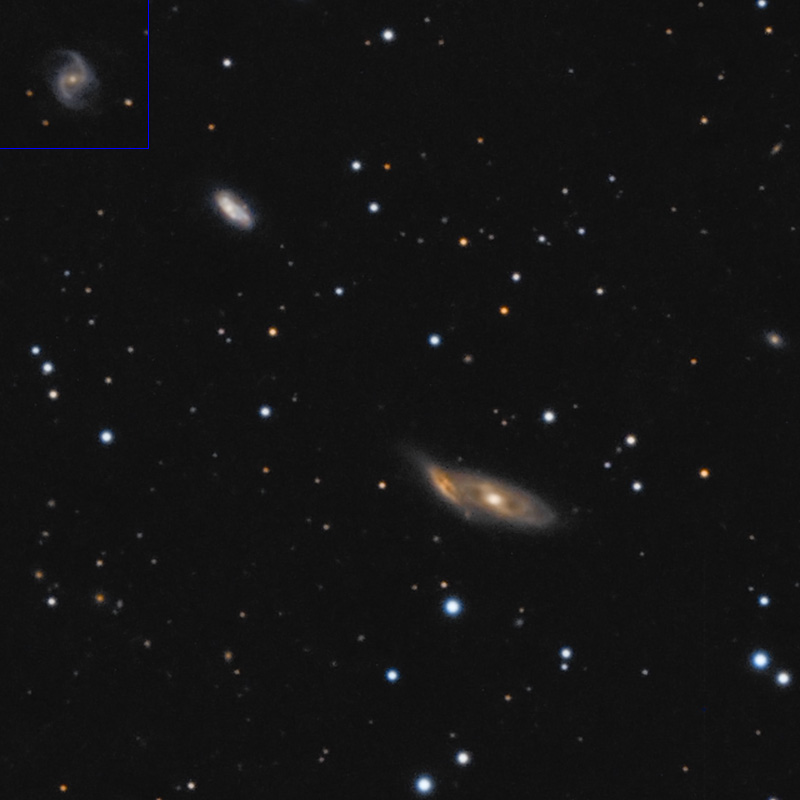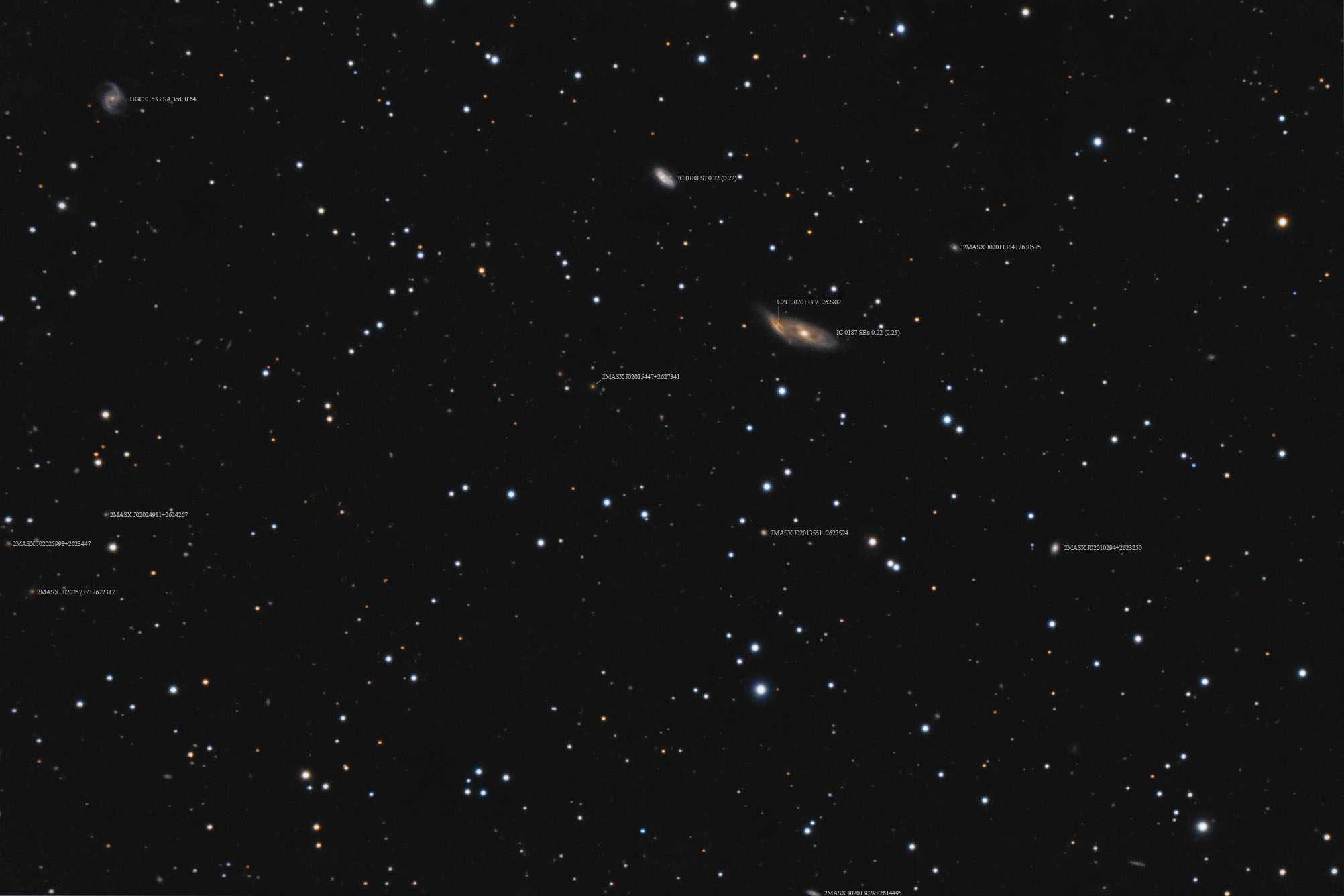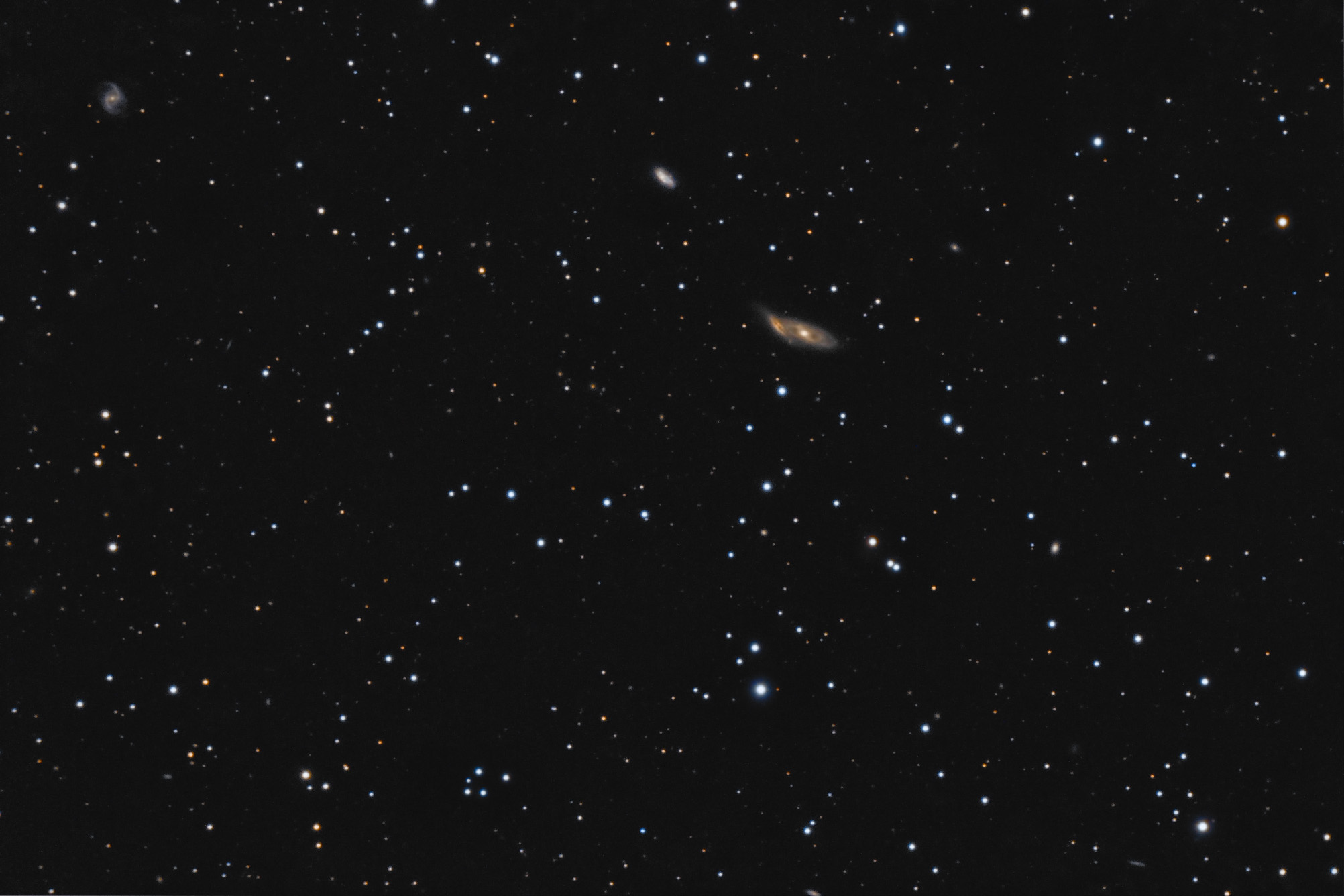| Description | Images |
Object name: IC0187Designation(s): IC0187, IC0188, IC 0187 is a pair of galaxies in Triangulum on the border with Aries. In fact, UGC 01533 (upper left corner) is in Aries. IC 0187 is an SBa spiral about 220 million light-years from us. UZC J020133.7+262902 is superimposed on IC 0187. The ALFALFA catalog considers them a merging system though the UGC calls them simply superimposed galaxies. Are they merging? The smaller UZC galaxy does seem to have a faint plume on the northeastern ansa. This may just be normal for the galaxy. I see no sign of interaction distorting the form of the larger IC 0187. With no redshift data for the UZC galaxy, I have to consider this as yet an unanswered question. The ALFALFA data is taken with the Arecibo radio telescope. Radio data may show features unseen at visual wavelengths. I didn't see any explanation as to why they consider this a merging system. Both galaxies are rather red in color with few new stars. Interaction often triggers star formation. Both appear to have plenty of dust and likely gas for this. I lean toward no interaction but it wouldn't take much to change my mind. Obtaining a redshift for UZC J020133.7+262902 might help settle this question. Also, consider that if this is their first approach then distortion wouldn't be easily seen at my resolution. My crude modeling of such interactions back in the early 80's showed little until distortion until after closest initial approach. Related Designation(s):2MASS J02013076+2628515, 2MASS J02014647+2632480, 2MASX J02013075+2628515, 2MASX J02014649+2632491, 2MASXi J0201307+262853, 2MASXi J0201464+263248, 2MFGC 01542, ADBS J020148+2632, ALFALFA 2-190, ALFALFA 2-191, ARK 071, CGCG 0158.7+2615, CGCG 0158.9+2618, CGCG 482-048, CGCG 482-049, HDCE 0112 NED002, HDCE 0112 NED003, HI J020133.9+262914, HI J020144.4+263227, IC 0187, IC 0188, IC0187, IC0188, IRAS 01587+2614, IRAS 01589+2618, IRAS F01587+2614, IRAS F01589+2618, KUG 0158+263, LDCE 0128 NED009, LDCE 0128 NED010, LGG 041:[G93] 009, LGG 041:[G93] 010, MCG +04-05-037, MCG +04-05-038, NSA 169782, NSA 169783, NVSS J020146+263249, PGC 007683, PGC 007706, UGC 01507, UGC 01510, USGC U095 NED05, USGC U095 NED06, UZC J020130.7+262853, UZC J020146.4+263248, [M98j] 034 NED01, [M98j] 034 NED02, | Permanent link: https://images.mantrapskies.com/catalog/OTHER/IC0187-IC0188/IC0187L4X10RGB2X10R-CROP125.JPG |


